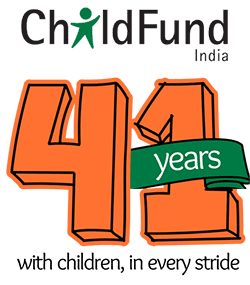Combating the Growing Menace of Online Sexual Exploitation and Abuse of Children in India
indiatimes.com – Apr 14, 2023
In recent years, India has seen an increase in the hideous crime of online sexual exploitation and abuse of children (OSEAC). The growing use of technology and the internet has made it simpler for offenders to target and exploit vulnerable children. Children are spending more time online and away from the safety net of their homes, schools, and parents, which has made this problem worse since the beginning of the COVID-19 pandemic.
Over the last few years, there has been a steady increase in cases of OSEAC in India, according to the National Crime Records Bureau (NCRB). In 2020 alone, 21,509 cases of online sexual exploitation and abuse of children were reported under the Protection of Children from Sexual Offenses (POCSO) Act. This, however, is only the tip of the iceberg; many cases go unreported due to the lack of education and shame associated with such crimes.
Article written by: Ashique Ali, Sr. Specialist (Secondary and Higher Education) ChildFund India
Rise in OSEAC
OSEAC is a global issue that affects children of all backgrounds and social classes, no matter where they reside. However, the prevalence and nature of OSEAC differ significantly between rural and urban areas. Rural areas typically have less internet connectivity and access to technology than cities. As a result of increased awareness and access to reporting mechanisms, there is a greater likelihood of OSEAC cases being reported in urban areas.
Rural areas, on the other hand, lack of digital literacy and awareness among parents and children in rural areas making it more difficult to detect OSEAC cases. Additionally, children do not understand the consequences of sharing personal information or engaging in risky online behaviours. Cultural factors influence the prevalence of OSEAC in both rural and urban areas.
Traditional gender roles and expectations may prevent girls from receiving an education or participating in activities outside the home in some rural areas, increasing their vulnerability to OSEAC.
What is sexual grooming?
Sexual grooming, sexting, and child pornography are all examples of OSEAC. Sexual grooming is the process of establishing an emotional connection with a child in order to sexually abuse them. This can include flattering the child, earning their trust, and lavishing them with gifts or attention. The exchange of sexually explicit messages, photos, or videos between two people, one of whom is a child, is known as sexting.
This can result in the child being coerced into sexual activity or the images and videos being shared online with others. Child pornography is defined as the creation, possession, or distribution of images or videos depicting children engaging in sexual activity. This is a serious crime with legal ramifications.
The rise of OSEAC in India is a complex issue that is being fuelled by a number of factors. These include the ease with which smartphones and the internet are available, the lack of online safety awareness among parents and children, and the slow pace of legal reform.
What can be done to prevent sexual grooming
To address this issue, a multifaceted approach that includes education, public awareness, and legal reform is required. Parents must be educated about the dangers of online grooming, and children must be taught how to recognise and report suspicious online behaviour. Schools can also help raise awareness and educate children about online safety. Additionally, we need to explain the meaning of ‘good touch’ and ‘bad touch’.
The government should also provide resources and training to law enforcement agencies in order for them to better detect and investigate cases of OSEAC. Online platforms must also take greater responsibility for child safety. This includes putting in place strong safety measures like age verification, reporting mechanisms, and content moderation.
The Indian government took steps to address the problem of OSEAC in 2012, when it passed the POCSO Act, which criminalises all forms of sexual abuse against children. The Ministry of Women and Child Development has also launched the ‘POCSO e-Box’ portal, through which children can anonymously report cases of abuse. The government has also established a number of specialised agencies to combat online child sexual abuse.
The National Crime Records Bureau (NCRB) and the Cyber Crime Investigation Cell (CCIC) are two such agencies that collaborate with law enforcement to identify and track online predators. Aside from these organisations, the government has launched a number of public awareness campaigns to educate children, parents, and carers about the dangers of online abuse. The government has also established a dedicated portal, the National Cyber Crime Reporting Portal, where citizens can report online crimes such as child abuse and exploitation.
Importance of creating awareness
Despite the government’s efforts, much more needs to be done in India to protect children from online sexual exploitation and abuse of children. It is critical to raise awareness about the issue and ensure that parents, teachers, and other stakeholders have the knowledge they need to protect children from online predators. Furthermore, it is critical to ensure that the legal framework is strong enough to deal with cases of OSEAC. Finally, greater collaboration among government, civil societies, and technology companies are required to develop effective solutions to protect children from online predators.
ChildFund has launched “WEB Safe & Wise: Creating A Better Digital World with Children” on 7th February 2023, Safer Internet Day, a global day of recognition of the importance of online safety. The WEB Safe & Wise campaign is an important and timely initiative aimed at promoting digital safety and well-being among children and young people in the digital age. Through awareness and education, the campaign promotes digital safety, cyberbullying, online privacy, and responsible online behaviour. It also aims to provide knowledge and tools to parents, carers, and educators in order to support children and young people in their digital lives.




